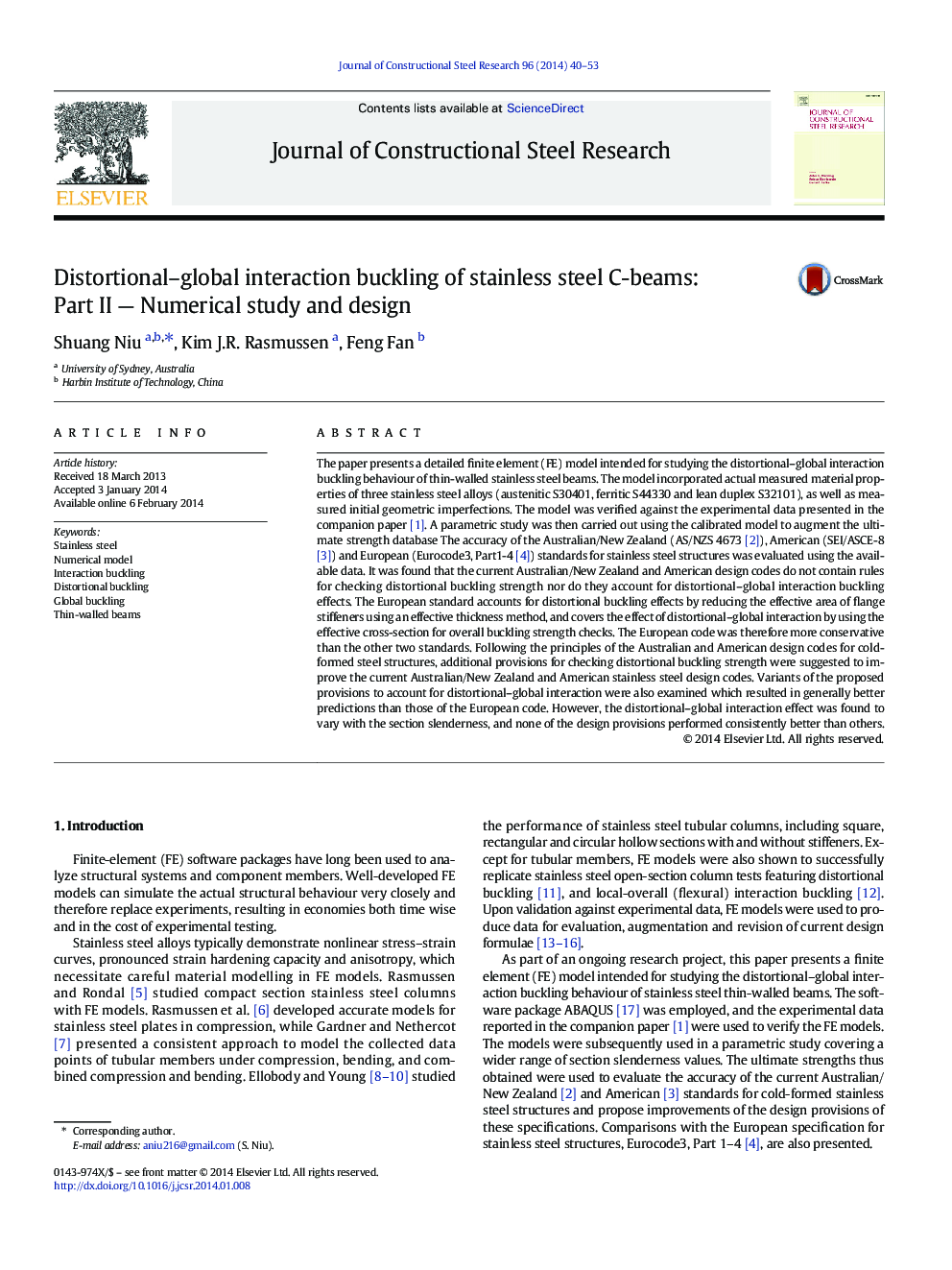| Article ID | Journal | Published Year | Pages | File Type |
|---|---|---|---|---|
| 284721 | Journal of Constructional Steel Research | 2014 | 14 Pages |
•FE models for distortional-global interaction buckling of stainless steel beams.•FE models verified against detailed test results and used in parametric study.•Australian, US and European standards evaluated, improved design formulae proposed.
The paper presents a detailed finite element (FE) model intended for studying the distortional–global interaction buckling behaviour of thin-walled stainless steel beams. The model incorporated actual measured material properties of three stainless steel alloys (austenitic S30401, ferritic S44330 and lean duplex S32101), as well as measured initial geometric imperfections. The model was verified against the experimental data presented in the companion paper [1]. A parametric study was then carried out using the calibrated model to augment the ultimate strength database The accuracy of the Australian/New Zealand (AS/NZS 4673 [2]), American (SEI/ASCE-8 [3]) and European (Eurocode3, Part1-4 [4]) standards for stainless steel structures was evaluated using the available data. It was found that the current Australian/New Zealand and American design codes do not contain rules for checking distortional buckling strength nor do they account for distortional–global interaction buckling effects. The European standard accounts for distortional buckling effects by reducing the effective area of flange stiffeners using an effective thickness method, and covers the effect of distortional–global interaction by using the effective cross-section for overall buckling strength checks. The European code was therefore more conservative than the other two standards. Following the principles of the Australian and American design codes for cold-formed steel structures, additional provisions for checking distortional buckling strength were suggested to improve the current Australian/New Zealand and American stainless steel design codes. Variants of the proposed provisions to account for distortional–global interaction were also examined which resulted in generally better predictions than those of the European code. However, the distortional–global interaction effect was found to vary with the section slenderness, and none of the design provisions performed consistently better than others.
